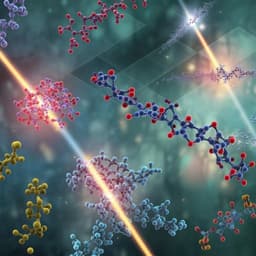
Chemistry
Autonomous mobile robots for exploratory synthetic chemistry
T. Dai, S. Vijayakrishnan, et al.
This innovative research led by Tianwei Dai and colleagues reveals how mobile robots can operate laboratory equipment and make decisions like humans, transforming the landscape of exploratory synthetic chemistry through automated workflows.
Playback language: English
Related Publications
Explore these studies to deepen your understanding of the subject.







